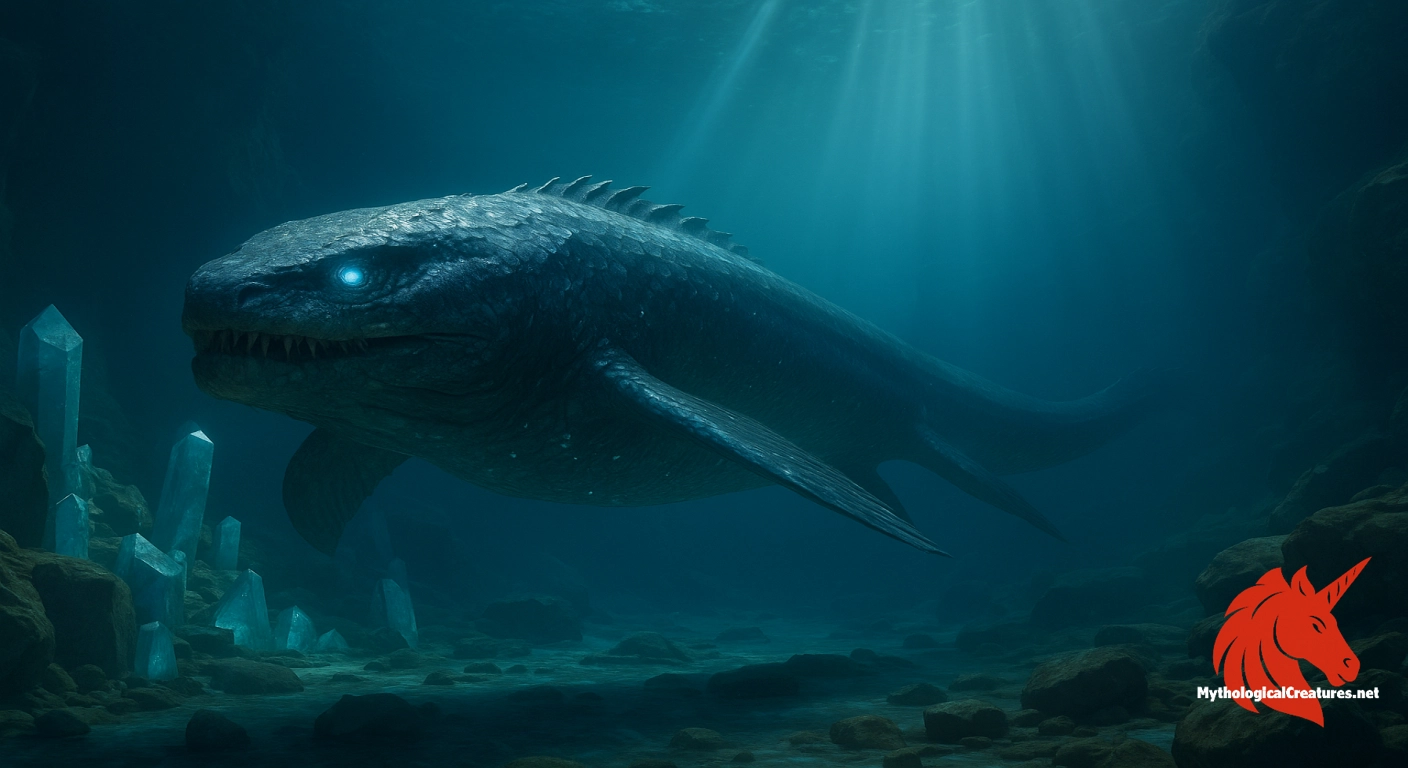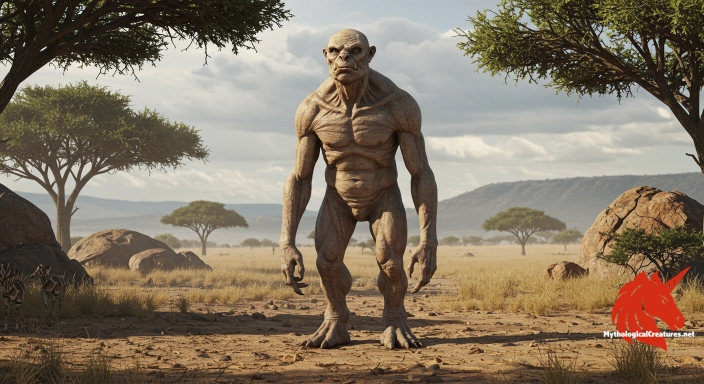Bahamut: Bahamut is a colossal, mythological aquatic beast from medieval Islamic cosmography.

Bahamut
Bahamut - Bahamut exemplifies the ancient belief in a layered cosmic structure, where monstrous beings form the foundation of the world.
Origins & First Encounters
Bahamut emerges in ancient Arabian cosmography as a titanic creature whose enormity and mystique have fascinated storytellers for centuries. Born from the rich tapestry of pre-Islamic myth and later woven into Islamic lore, this cosmic beast is often depicted as the deep-seated foundation beneath the earth itself. Revered and feared alike, Bahamut was first attested in classical texts where its massive body was said to undergird the very structure of the world. Its origins lie in a tradition that blends myth with metaphysics, reflecting a worldview in which the cosmos is sustained by layered, animate entities. The figure of Bahamut played a critical role in explaining natural phenomena for societies that sought metaphysical support for the physical earth. Its association with the mystical is enhanced by the belief that it carries another colossal creature on its back, thus emphasising a universe of interlinked beings. In early cosmographies, Bahamut is both a stabiliser and an enigma, embodying the dark, unfathomable forces lurking beneath the known world. Through centuries, the creature has retained its significance, symbolising the mysteries of creation and the hidden depths of nature.
Source Texts & Tale Variants
The earliest literary sources on Bahamut can be traced to texts by scholars such as Zakariya al-Qazwini, who played a pivotal role in documenting the creature in his cosmographical works. In these medieval treatises, Bahamut is described as a monster supporting the earth, underlining the creature’s importance in ancient cosmogonies. Multiple variants of its tale have appeared in different manuscripts, each adding layers of complexity to its myth. Some sources refer to it by the name Balhūt, pointing to a tradition of evolving nomenclature that reflects shifting cultural interpretations. Early texts sometimes distinguish between names, with Lutīyā appearing as an initial designation and later becoming associated with exotic bynames like Bahamūt. The narrative surrounding Bahamut has been enriched by a plethora of folklore elements that transcend a single definitive account. Over time, additional commentary from later writers and interpreters has blended with the original texts, creating a dynamic and multifaceted myth. These sources collectively illustrate how ancient storytellers used cosmic monsters like Bahamut to symbolise the unknown and the incomprehensible dimensions of the universe.
Form & Powers
The physical description of Bahamut is imbued with grandeur and a sense of otherworldliness that defies simple categorisation. Its colossal form is often imagined as a massive, shadowed creature resting in the dark, unfathomable depths beneath the earth. Ancient descriptions suggest that Bahamut is not merely a beast of flesh and bone but an amalgamation of elemental forces, rendered with an almost ethereal quality. In some accounts, it is depicted with a body that shimmers with hints of gemstone-like scales, contributing to its legendary status. The creature’s size is often depicted as immeasurable, with dimensions that dwarf even the most formidable animals known to man. Its presence evokes the image of a primordial giant, whose very being seems to stabilise the structure of the cosmos. There is an inherent duality in its physical representation, blending attributes of aquatic life with the solidity of the terrestrial realm. Throughout various tellings, details such as its texture, movement through water, and even the mysterious energy it exudes have varied, further amplifying its mythic aura.
Regional Faces
Regional interpretations of Bahamut reveal a fascinating tapestry of local adaptations and cultural inflections across the Middle East and beyond. In some traditions, the creature remains firmly anchored in its role as the cosmic foundation, a deep-seated beast that supports the earth. In other interpretations, particularly in certain North African and Islamic narratives, Bahamut’s association with marine elements is emphasised by its suspension in water, which symbolises its connection to the primordial chaos. Variants in its nomenclature, such as Bahamoot and Balhūt, reflect how distinctly different communities have internalised the myth, adapting it to local cosmologies and linguistic contexts. In European medieval bestiaries influenced by Arabic lore, echoes of Bahamut’s characteristics appear, albeit sometimes in diluted or altered forms. Local adaptations often imbue the creature with additional qualities that resonate with specific cultural values, such as the embodiment of unfathomable wisdom and the balance of nature. Each regional variant, while maintaining the core idea of an immense, foundational beast, adds subtle nuances that echo the local environment and belief systems. Together, these adaptations illustrate how a single mythic motif can weave through diverse cultures, evolving yet enduring across the ages.
Cultural Parallels
In a broader mythological context, Bahamut shares striking similarities with other cosmological entities found across various cultures. Its role in supporting the world finds a counterpart in the concept of the world turtle in Hindu and Chinese traditions, where a colossal creature underpins the universe. Comparative study also reveals parallels with the Leviathan of Hebrew lore, particularly in the thematic interplay between monstrous power and cosmic order. While Leviathan often symbolises chaos incarnate, Bahamut, despite its ferocity, is integrally linked to the structure and stability of the cosmos. The cosmic bull that is carried by Bahamut shows echoes of other legendary animals, such as the Norse world serpent Jörmungandr and the titan Atlas, who uphold and encircle the world in their own mythic narratives. This comparative analysis highlights how different cultures utilise similar motifs to encapsulate the mystery and might of the universe. The cross-cultural resonances are evident not only in the creatures’ roles but also in the deep symbolic connections they foster between life, death, and the natural order. By examining these shared themes, one can appreciate the universal human endeavour to explain the cosmos through mythic allegory.
Legacy & Modern Evolution
Over the centuries, Bahamut has evolved from a dark, foundational myth into a versatile symbol in contemporary fiction and popular culture. Historically, the creature served as a metaphor for the unseen forces that govern the natural world, a notion that has gradually been reinterpreted through modern imagination. Medieval cosmographers portrayed it as both an essential support of the earth and a creature of profound mystery, a legacy that continues to influence artistic and literary depictions today. In modern role-playing games and fantasy literature, Bahamut has often been reimagined as a majestic, wise dragon or a celestial guardian, diverging significantly from its original monstrous depiction. This transformation reflects changes in cultural perceptions as mythic symbols are repurposed to fit new narrative frameworks in science fiction and fantasy art. Contemporary interpretations tend to downplay its darker aspects, instead emphasising its role as a paragon of cosmic power or a benevolent protector of the natural order. As the myth traverses time, it continues to inspire creative expressions in various media, from video games to graphic novels and beyond. The enduring legacy of Bahamut is a testament to the enduring charm and adaptability of myth, resonating with modern audiences while echoing ancient mysteries.
Interesting Fact
Bahamut's story blurs the lines between myth and cosmology, illustrating an ancient worldview where the earth is literally supported by massive, interlinked creatures.
Quick Creature Info
Origin:
Associations:
Our Mythic Legendary Rating:

Also Sometimes Known As:
Habitat:
Supernatural Powers:
Physical Attributes:
Abilities:
Behavior:
Lore:
Related Creatures, Tales or Lore
- LLeviathan
- JJormungandr
- KKetos
References
Discover Another Mythical Legend You May Not Have Heard Of?
Uncover the mysteries of ancient folklore and expand your knowledge of legendary beings from cultures around the world.
Dare to Meet the Syrbotae....
Curated by the Mythological Creatures Team (rev. May 2025)
